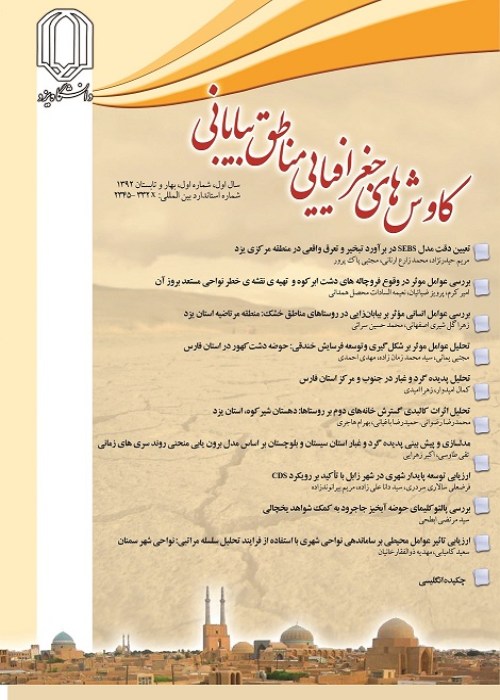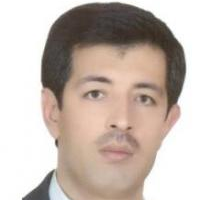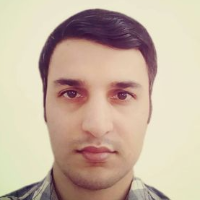Exploratory analysis of the spatial distribution pattern of capability poverty in Nourabad Mamasani city
One of the most important goals of low-income countries and international financial institutions today is to reduce poverty. Planners and policymakers are always looking to reduce poverty. The success of poverty alleviation programs depends as much on the accurate identification of the phenomenon of poverty and its causes as it depends on the policies and how the programs are implemented. Amartya Sen proposed the poverty approach as opposed to the income poverty approach. In this view, poverty is defined as deprivation of individual and social capabilities, and poverty is basically a lack of capability, and it is obvious that the solution must also be sought in the development of human capabilities. Given that capability poverty plays a significant role in shaping the ultimate concept of poverty, awareness of the spatial distribution pattern of its zones is the first step in planning and implementing deprivation policies in urban areas. In Iran, too, urbanization has been accompanied by a rapid and rapid process, which has made the phenomenon of poverty and social inequality and severe class differences a feature of the life of third world cities on urban life, and combating it is one of the macro policies of the planning system the country is considered in both short-term plans and long-term strategies. The city of Nourabad Mamasani, like other cities in the country, due to increasing urbanization, has formed poverty zones in some neighborhoods of the city, which has created negative consequences such as insecurity, social crimes, begging and .... To mitigate the problem of poverty, first, complete information on the spatial distribution of its zones in the city of Noorabad Mamasani should be provided to officials and urban planners so that they can use effective mechanisms in this regard. Therefore, the present study seeks to answer these questions; What is the pattern of distributed poverty zones in the city of Nourabad Mamasani In what parts of the city of Nourabad Mamasani are the areas of capability poverty concentrated? What percentage of the population of Nourabad Mamasani is in poor poverty areas? The purpose of this research is the zoning of indicators of capability poverty in the level of statistical blocks of Nourabad Mamasani City.
The present research is applied in terms of purpose and in terms of the nature and method of research is used descriptive-analytical methods. The statistical population of this research is the statistical blocks of Nourabad Mamasani in 2011. The data related to the theoretical foundations of the research have been prepared by libraries and documents and the raw data of the research have been extracted from the statistical blocks of Nourabad Mamasani city which have been prepared based on the 2011 census of the Statistics Center of Iran. It should be noted that due to the lack of information about a large number of indicators of ability poverty in the statistical blocks of 2016, in this study, the statistical blocks of 2011 have been used. First, 9 capability poverty indicators were scaled by the fuzzy method in the Excel software environment and then by combining the 9 desired indicators, the integrated capability poverty index was obtained. The combined index of capability poverty has been analyzed spatially with the method of central feature, mean center, directional distribution, standard distance, spatial autocorrelation Moran and hot spots in the Arc GIS software environment. And then by converting the hot spots map to the raster layer, the integration of the integrated poverty index is done.
The studies of this study on capability poverty in Nourabad Mamasani city show that the central complication and the central mean of the integrated capability poverty index are located in neighborhood 8 and next to each other. Directional or elliptical distribution The standard deviation of the combined capability poverty index also has a southeast-northwest direction distribution. The standard distance also shows that the spatial distribution pattern of the integrated poverty index is centered around the central average of the city. Based on Moran's spatial autocorrelation method, it has been determined that the distribution of the values of the integrated poverty index has a cluster pattern. According to the results of the hot spots method, in the northern parts of Nourabad Mamasani city, more hot spots are seen that have higher values of the combined poverty index and have formed hot space clusters. In the southern parts of the city of Nourabad Mamasani, more cold spots can be seen, which have lower values of the combined poverty index and have formed cold spatial clusters.
According to the integrated capability poverty index zoning, 50.2% of the population of Nourabad Mamasani is poor and very poor and 29.8% of the population is prosperous and very prosperous and 20% of the population is in the middle zones. Therefore, it can be said that affluent and very affluent areas are more concentrated in the southern parts of the city, while poor and very poor areas are concentrated in the northern half of the city; This indicates the existence of a huge class difference in the Nourabad Mamasani city.
- حق عضویت دریافتی صرف حمایت از نشریات عضو و نگهداری، تکمیل و توسعه مگیران میشود.
- پرداخت حق اشتراک و دانلود مقالات اجازه بازنشر آن در سایر رسانههای چاپی و دیجیتال را به کاربر نمیدهد.




